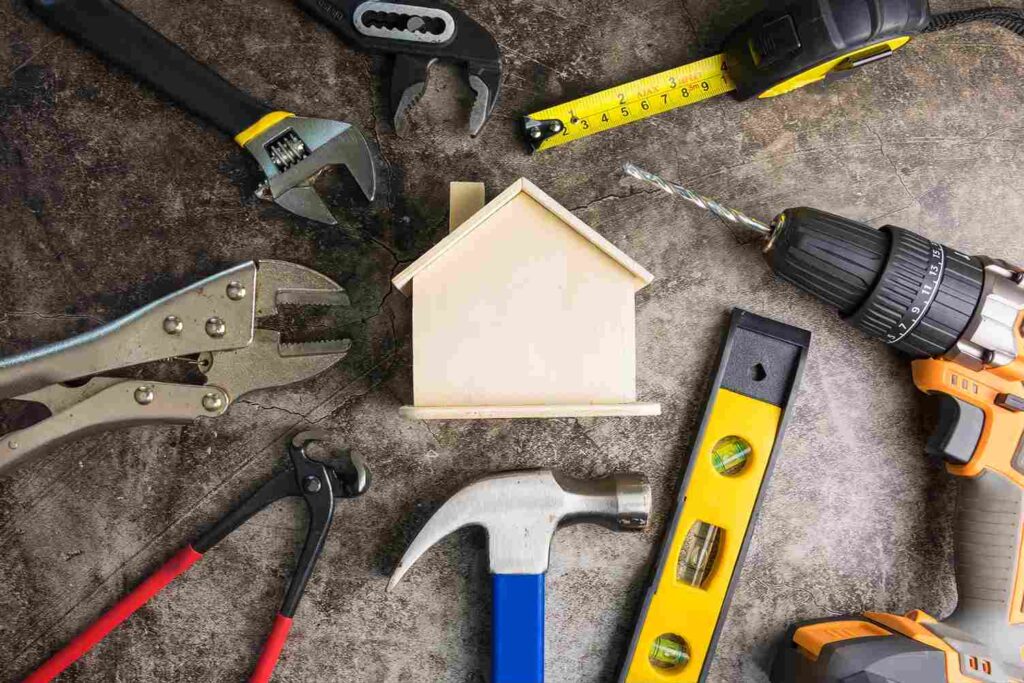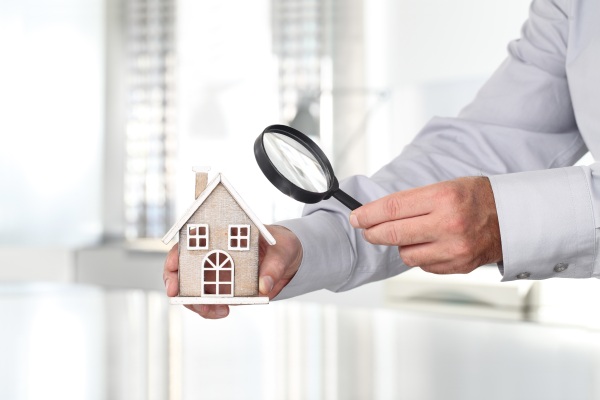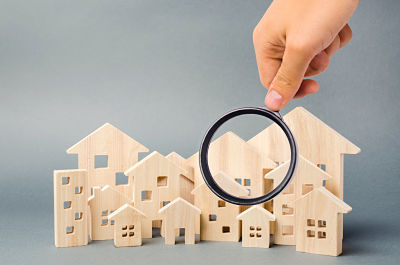
In rental properties, the landlord and the tenant share a mutual responsibility for maintaining the property’s condition to ensure it is a safe and comfortable place to live.
Despite this shared aim, each has quite different responsibilities, so it’s important to clarify who should shoulder which maintenance and repair tasks from the start. This way, issues can be resolved quickly and amicably without conflict or misunderstanding.
Generally, the landlord is responsible for repairs and replacements, while the tenant should oversee the day-to-day upkeep of the property and its furnishings.
This article will explore which laws regulate rental property repairs and maintenance and outline which duties fall on the tenant.
Which Laws Regulate Landlord and Tenant Responsibilities for Maintenance?
Whilst there is a certain amount of wiggle room when deciding who repairs and maintains what in a rental property, the law pre-determines the most important responsibilities.
The go-to piece of legislation that you need to know about is Section 11 of the Landlord and Tenant Act 1985. This legislation applies to assured shorthold tenancies. It makes it clear that landlords have to take care of the big stuff, like maintaining the property’s structure, heating, electrics, and plumbing, whilst tenants should handle the day-to-day upkeep.
If you’re ever unsure about whose responsibility it is to fix something, Section 11 is a good place to start.
What Maintenance Responsibilities do Tenants Have?
Ok, so we know that it’s the landlord’s responsibility to handle the “big stuff”, but what exactly does that mean, and what is there left for the tenant to do?
In this section, we’ll outline what maintenance tasks the tenant is responsible for.
Look After the Property in a ‘Tenant-like’ Way.
Tenants are all responsible for looking after the property they are renting in a “tenant-like manner”. But what does this mean? Simply put, tenants should treat the property they’re renting as if it were their own. This should involve keeping it clean, preventing damage, using fixtures and fittings correctly, and conducting minor repairs and garden maintenance.
Carry Out Minor Repairs
When we talk about minor repairs, we mean looking after the small stuff, like changing fuses, swapping the batteries in the smoke alarm, and replacing lightbulbs. After all, it’s not reasonable to call out the landlord every time a bulb goes. Tenants should also make sure they’re not flushing anything they shouldn’t be down the toilet and keeping plug holes clean and clear. Clearing minor toilet or plug-hole blockages is also a job the tenant could try to resolve themselves before calling in the landlord.
Inform the Landlord About Repairs or Maintenance Required.
As tenants live in the property, they usually know sooner than the landlord about any repairs or problems with the property. They must report anything they notice to their landlord as soon as possible. If they don’t, the problem could worsen and become more difficult and expensive to repair if it’s not caught until later down the line.
Provide Property Access for Repairs and Maintenance
If any repairs or maintenance are required, the tenant should provide the landlord access to the property to sort it. In return, the landlord should always give at least 24 hours’ notice before they or contractors attend the property. Visits and repair work should also be kept to reasonable hours (i.e. between 8am and 6pm) to cause the tenant as little disruption as possible.
Maintain Their Appliances
According to Section 11, the landlord is not responsible for any appliances or other items the lessee is entitled to remove from the property. In other words, if the tenant bought it, they must maintain, repair, or replace it.
Repair or Replace Damages
If the tenant or one of their guests causes damage to the property or any fixtures, fittings, or appliances within it, then it’s the tenant’s responsibility to fix or replace it. They should inform the landlord about the damage and discuss how best to resolve the problem. Sometimes, the landlord may be happy for them to repair or replace it themselves. Alternatively, the landlord may prefer to arrange for the repair work to be carried out by a trusted contractor and then recharge the cost to the tenant.
Buy Fire-resistant Furniture
When a landlord kits out a rental property with furniture, they must ensure that it meets fire safety standards and is made from fire-resistant materials. Equally, tenants should ensure that any furniture and furnishings they bring into the property meet the same fire safety standards and are not a health and safety hazard.
Arrange Electrical Appliance Safety Checks
While looking at health and safety best practices, let’s talk about electrical appliances. It is recommended that landlords regularly carry out portable appliance testing (PAT) on any electrical appliances that they have supplied in a rental property. Equally, it is good practice for tenants to do the same to ensure that their electrical appliances are safe and reduce the risk of an electrical fire breaking out.
Keep Outdoor Spaces Tidy
If the rental property enjoys the benefit of a back or front garden, yard, or driveway, then the tenant may be responsible for keeping it looking fresh and tidy. Cluttered or overgrown outdoor spaces can be an eyesore and can attract all sorts of unwanted pests. Mowing the lawn, cutting back plants, and generally keeping the area free of rubbish and clutter will make the property a nicer place to live.
Ventilate the Property
If the property has extractor fans in the kitchen or bathroom, tenants must use them. If no extractor fans are present, regularly opening windows is another excellent way to ventilate the property. Poor ventilation can cause smells and moisture to build up inside. Good ventilation helps to prevent damp problems and mould, both of which create an unpleasant and unhealthy environment to live in and could cause significant damage to property over time.
Perform an End-of-tenancy Cleanup
Once the tenancy is up and it comes to moving out, tenants must ensure that they return the property to the condition they found when they moved in. That means thoroughly cleaning the property, replacing any missing items from the inventory, and arranging repairs for anything they’ve broken that isn’t just ‘fair wear and tear’.
Get Permission Before Making Changes to the Property
If tenants get the urge to decorate or make any other changes to the property, they should only do so with the landlord’s permission. Some landlords may be happy for the tenant to decorate as they see fit, while others may not allow tenants to make any changes.

What Maintenance Responsibilities Do Landlords Have?
Ok, we’ve outlined the tenant’s responsibilities – so what’s left for the landlord to do?
As the property owner, the landlord is responsible for looking after all the big stuff that could go wrong with the property. There is no getting away from these responsibilities as they’re laid out by law in Section 11 of the Landlord and Tenancy Act 1985.
According to Section 11, the landlord must do the following:
- Ensure the structure and exterior of the property is kept in good condition.
- Ensure all basins, sinks, baths, toilets, and pipework fully function.
- Keep heating and hot water systems in good working order.
- Ensure electrical wiring is safe.
- Keep gas pipes and boilers safe and operational.
- Maintain chimneys and ventilation systems.
These duties fall on the landlord’s shoulders, and it is against the law for the tenancy agreement to state otherwise.
Fit for Human Habitation
The landlord is also responsible for ensuring the property is ‘fit for human habitation’. If it is not, they are responsible for making any repairs necessary to bring it up to a habitable standard. This means the landlord must sort out any damp, mould, or pest issues.
Of course, tenants also play a part in ensuring that the property is kept in a condition that is fit for human habitation. They are responsible for looking after the property in a way that prevents these problems. This could include opening windows when cooking or after showering to let moisture out and keeping outdoor spaces clean and tidy to deter pests. The landlord and tenant should work together to maintain the property’s condition and make it a pleasant place to live.
How to Communicate Tenant Responsibilities
All tenant and landlord maintenance responsibilities should be laid out within the tenancy agreement.
If either party is ever in doubt about whose responsibility it is to repair or maintain something within the rental property, then this could be where they refer to for an answer.
Although there are key areas of rental property maintenance where the law dictates who is responsible for what, there are also more grey areas where it is at the landlord’s discretion to set expectations. If landlords want tenants to carry out specific maintenance tasks like mowing the lawn, they should insert a clause into the tenancy agreement to specify this.
Before tenants sign the tenancy agreement, it is best practice for both landlord and tenant to run through the tenancy agreement, with the landlord highlighting any specific responsibilities the tenant has for maintaining the property. This sets the expectations from the start, gets the landlord/tenant relationship off to a smooth start, and helps avoid any confusion or disputes later.
The agreement should include fair and transparent terms about repairs and maintenance, including details about the process tenants should follow to report any repairs required and how the landlord will respond. As best practice, the landlord should also include provisions for access to the property for repairs and an emergency contact number for urgent issues.
What Happens When Tenants Neglect Their Responsibilities?
Making sure that everyone is clear about their responsibilities from day one can help avoid running into misunderstandings or disputes later down the line.
Landlords should be proactive rather than reactive by going through the tenancy agreement in detail before the tenant moves in and highlighting the key duties they expect the tenant to fulfil to maintain the property effectively.
So, if after diligently reviewing the tenancy agreement together, the landlord finds that the tenant isn’t maintaining the property as agreed – what can they do?
Provide Guidance
Providing the tenant hasn’t trashed the property, the landlord should offer constructive and practical advice about maintaining the property and remind the tenant about their responsibilities rather than becoming immediately confrontational. Landlords should also remember that the standards of cleanliness can vary from person to person. Unless the tenant’s negligence poses an immediate risk to health and safety, the landlord can’t tell them exactly how they must clean the property.
Further Action
If the situation escalates to the point where the tenant’s negligence is endangering health and safety or compromising the property’s structure, then the landlord may be able to take further action. The action they can take depends on the severity of the issue and whether the tenancy agreement terms are being breached; it could range from issuing a formal warning to taking legal action.
Keeping the rental property in optimal condition benefits both the tenant and landlord and requires them to work together to maintain it. Both parties have distinct responsibilities when it comes to maintaining and repairing the property, with the landlord responsible for any substantial repairs and the tenant responsible for the day-to-day maintenance of the property and reporting any problems as soon as they arise. Landlords can ensure that property maintenance and repairs run smoothly by clarifying tenant responsibilities within the tenancy agreement and encouraging clear, open, and transparent communication.



